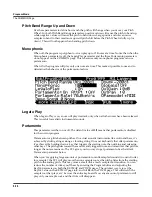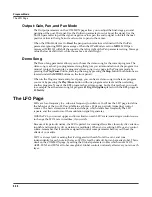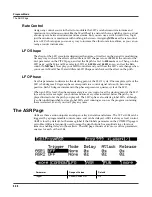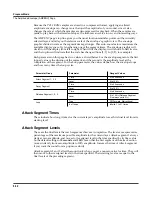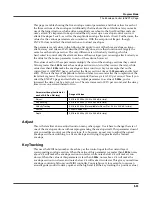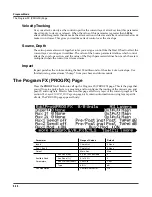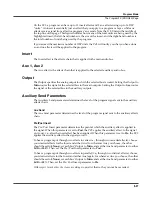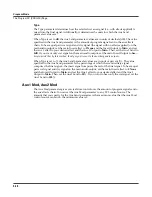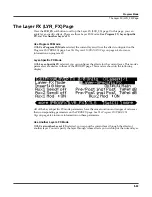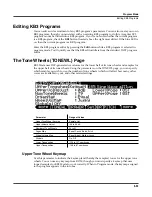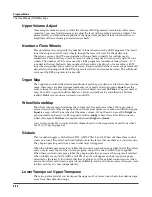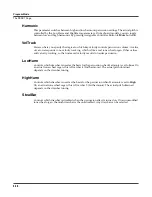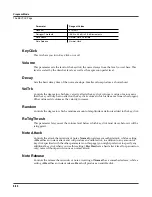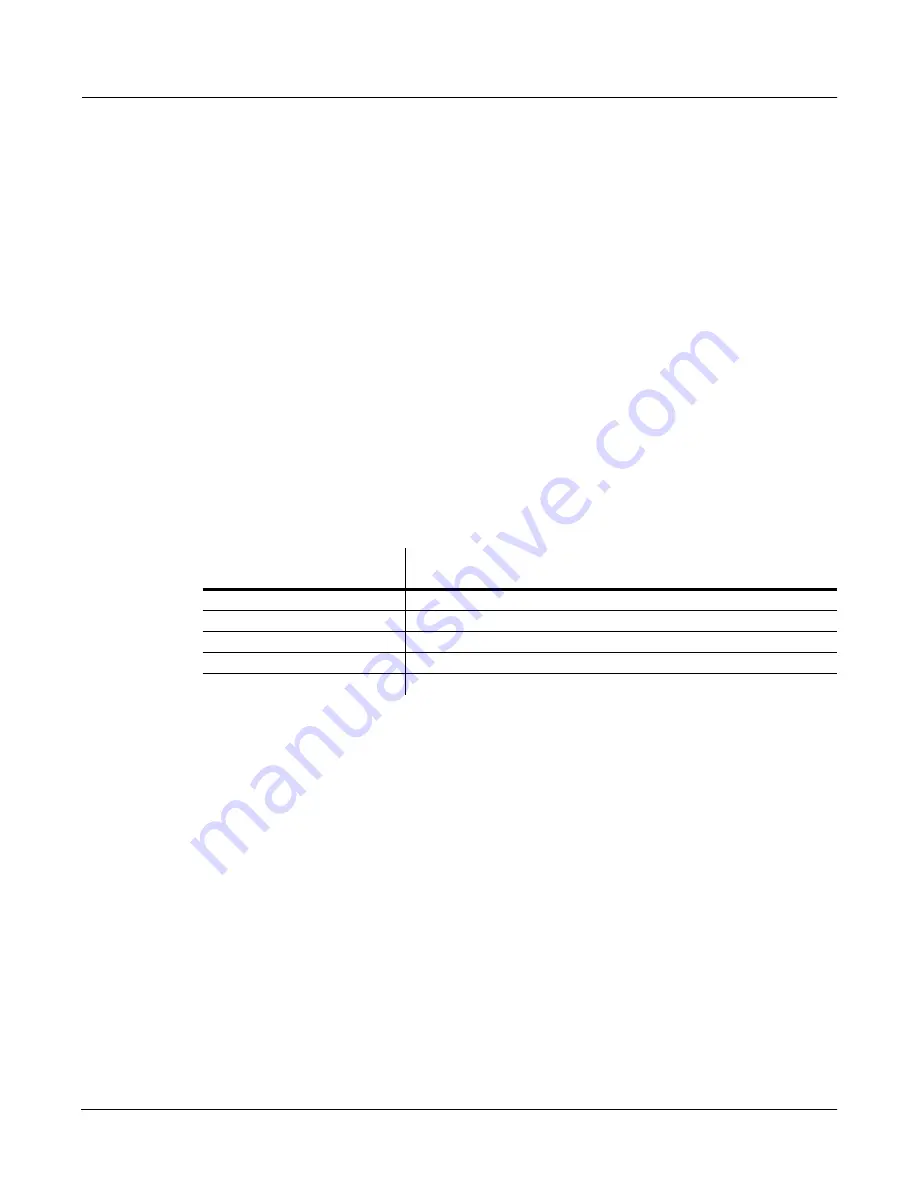
Program Mode
The Envelope Control (ENVCTL) Page
6-45
This page is a table showing the five envelope control parameters, and their values for each of
the three sections of the envelopes. Additionally, the line above the soft buttons lets you make
use of the Impact feature, which adds an amplitude overshoot to the first 20 milliseconds of a
note’s attack. It’s important to keep in mind that if you set up an envelope control source, it
affects Envelopes 2
and
3, as well as the amplitude envelope (Natural
or
User). Furthermore, the
values for the various parameters are cumulative. With the exception of Impact, though,
ENVCTL does not affect the attack sections of natural envelopes.
The parameters and values in the following list apply to
each
of the three envelope sections—
attack, decay, and release. We’ll describe them only once, since their functions are largely the
same for each envelope section. The only difference is with velocity tracking, which is
hard-wired to control only the attack sections of the envelopes (you can assign attack velocity as
the value for the Source parameter in each of the sections, however).
The values of each of these parameters multiply the
rates
of the envelope sections they control.
Values greater than
1.000x
make the envelope sections run
faster
(they
increase
the rate), while
values less than
1.000x
make the envelope sections run
slower
. Say for example that on the
current layer’s AMPENV page you had set the Decay section’s time at
2.00 seconds
, and its level
at
0%
. This sets the layer’s amplitude to fade to silence two seconds after the completion of the
last attack segment. The decay
time
is two seconds; the decay
rate
is 50% per second. Now if you
select the ENVCTL page and set the Decay Adjust parameter to a value of
2.000x
, you’ve
increased the decay
rate
by a factor of two. The rate increases to 100% per second, and the decay
time is now one second instead of two.
Adjust
This is the familiar Coarse adjust found on many other pages. Use it here to change the rate of
one of the envelope sections without reprogramming the envelope itself. This parameter doesn’t
give you realtime control over the envelope. It is, however, a good way to adjust the natural
envelopes without switching to a User envelope and trying to approximate the Natural
envelope.
Key Tracking
This uses the MIDI note number of each key as the control input for the current layer’s
corresponding envelope section. When the value of this parameter is greater than
1.000x
, notes
above C 4 will make the envelope section run faster, while notes below C 4 will make it run
slower. When the value of this parameter is less than
1.000x
, notes above C 4 will make the
envelope section run slower, and notes below C 4 will make it run faster. This gives you realtime
envelope control right from your MIDI controller. You might use it, for example, to cause an
acoustic guitar sound to decay quicker at the high end (set the key tracking to a positive value).
Parameter Group (Available for
each of Att, Dec, Rel, Imp)
Range of Values
Adjust
0.018 to 50.000x (-24.0 to 24.0 dB for Imp)
Key Tracking
0.018 to 50.000x (-2.00 to 2.00 dB for Imp)
Velocity Tracking
0.018 to 50.000x (Not available for Dec or Rel; -24.0 to 24.0 dB for Imp)
Source
Control Source List
Depth
0.018 to 50.000x (-24.0 to 24.0 dB for Imp)
Summary of Contents for PC3
Page 24: ...1 6 Introduction Options ...
Page 50: ...4 4 The Operating Modes Using the Modes ...
Page 174: ...7 54 Setup Mode The Utility Soft Buttons ...
Page 178: ...8 4 Quick Access Mode Making Your Own QA Banks ...
Page 204: ...9 26 Effects Mono Algorithms ...
Page 266: ...A 2 MIDI Implementation Chart ...
Page 308: ...Index x ...




